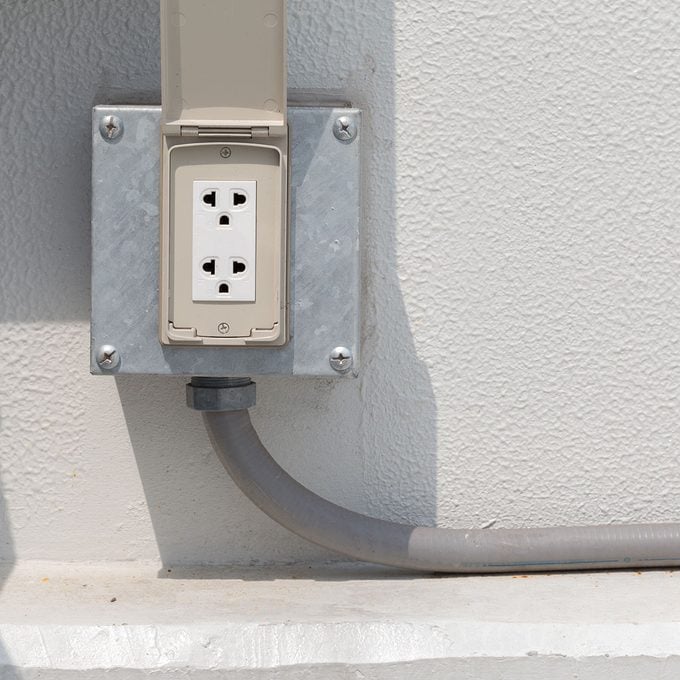Electrical inspector John Williamson gives a quick rundown of the requirements for outdoor and garage receptacles.
Expert Guide To Garage Receptacle Height & Placement
Outdoor Receptacle Outlets
Outdoor receptacle outlets are required to be installed on both the front and back of a home, as well as around a garage, in order to provide a safe place to plug in an extension cord. This discourages people from running extension cords through doorways (indoors to outdoors) and minimizes excessive lengths of extension cords. The basic rule is that a receptacle outlet needs to be installed where it is readily accessible from grade level, and not more than 6 ½ feet above grade level. This applies to both the front and back of the home. Outdoor receptacles must have Ground Fault Circuit Interrupter (GFCI) protection, they need to be tamper-resistant (TR), and they also must be weather-resistant (WR).
Learn more about garage wiring!
Garage Receptacles
For many of us, there is no such thing as having too many receptacles in our garages. It seems like we could always have a few more. However, the garage electrical outlet code is just a minimum set of installation rules, including height.
The basic rule for garage receptacles is that one receptacle outlet needs to be installed in each vehicle bay and not more than 5 ½ feet above the floor. This rule is applicable to both attached garages, and detached garages that are supplied with electric power (a detached garage is not required to be supplied with electric power; that is an option for the owner). The idea of requiring a receptacle outlet in each vehicle bay is to ensure that a receptacle outlet is available for charging any electric vehicles that may be parked in the garage.
About the Author
John Williamson has been in the electrical industry for 40 years and is a licensed master electrician and certified building official. John has worked for the state of Minnesota for over 23 years and is the Chief Electrical Inspector. For the past 25 years John has also provided electrical code consultation to various book and magazine publishers





















